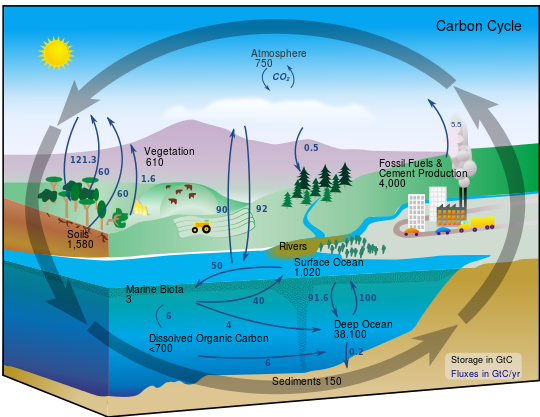Global Significance of the Changing Freshwater Carbon Cycle
Published on by Water Network Research, Official research team of The Water Network in Academic
Even though freshwater takes up only 4% of the Earth’s surface, it has a vast role in the global carbon cycle.

Only recently has the importance of the role of freshwater on the global carbon cycle been discovered.
Through carbon respiration (carbon emissions and releases) and sequestration (dioxide removed from the atmosphere and held in solid or liquid form) freshwater contributes greatly to the carbon cycle. Additionally, streams and rivers move huge amounts of carbon to the oceans from land.
The amount of carbon emitted by the inland waters is comparable to the net amount of carbon absorbed by living organisms on Earth’s land surface and in its oceans.
Not only this, but freshwater buries more carbon in sediments than the ocean floor.
This data should be reexamined as it holds some uncertainty.
However, it is certain that freshwater is rapidly warming, much faster than the atmosphere and oceans.
The biosphere exchanges more than 400 billion metric tons per year, out of which the land and oceans absorb 212 and release 206 billion. 10 billion metric tons can be attributed to androgenic activities, half of which is accumulated in the atmosphere and the other half gets absorbed by the oceans and land.
That means that we know what happens to only- 80% of the carbon.
Half of the carbon absorbed by the land ends up in inland waters. Part of it then gets respired and goes back to the atmosphere as a gas but part of it gets buried in sediments.
Freshwater, therefore, plays both the good and bad role in the carbon cycle.
One thing is certain – more research should be done to establish the exact role freshwater plays in the carbon cycle, especially in combination with global warming.
Media
Taxonomy
- River Studies
- Environment
- Freshwater
- Climate Change
- Carbon
- Fresh Water Ecology
- Carbon Footprint